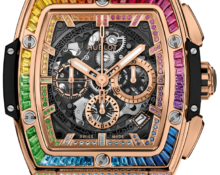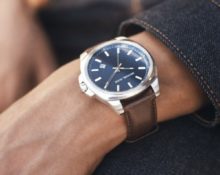Tissot is a watch from the Swiss brand of the same name with a worldwide reputation and more than a century and a half history. They are produced exclusively in their homeland, but are supplied to 150 countries. Unfortunately, this company did not escape the fate of its colleagues in the “shop”: its products are copied by shadow companies. However, having studied the characteristics of the original and approached the choice with all responsibility, it is not difficult to expose the schemers. Of course, if you don’t aim at luxury models.

Two main ways to detect fakes
Fake watches can be divided into two categories. The first category includes cheap products that litter market stalls around the world. They usually have many defects and are designed to appeal to uninformed buyers who are easily fooled. So, for example, the words that the low price is due to the transfer of production to third world countries are complete nonsense. Real Tissot (or rather Tissot) is manufactured and assembled in Switzerland down to the last screw.Thanks to the highest quality, the cost of new products does not fall below 18 thousand rubles. The upper price bar exceeds it tens of times.
The second type includes imitations for representatives of the business class and above. Externally, they are practically indistinguishable from the originals and are slightly inferior in price. Sometimes only a specialist who can understand the materials and mechanism can establish the truth.
By the way! Even very rich people sometimes buy a more budget-friendly “twin” for their watch. They use it for everyday wear to protect the original from damage and other troubles.
Visual inspection
First, you should take a closer look at the materials from which the accessory is made. So, in the original:
- The body is most often made of stainless steel. In the T-rosket line it can be brass, T-touch – titanium, and in some cases – gold.
- Super-strong sapphire crystal is installed on almost all models. Mineral or hesalite are occasionally found in pocket ones.
- The strap in most products, especially classic and ladies' ones, is steel or leather. In sports and sensory applications, rubber or fabric are often used.
- Parts can be made of metal, ceramics, silicon. Depending on the design, there may be inlay with precious stones, such as diamonds.

Of course, there can be no question of scratches, chips, nicks and other external defects. The build quality should also be top notch.
Special attention should be paid to the “identification marks” of the brand, for example:
- "TISSOT" inscription
- letter "T"
- 1853 is the year the company was founded.
They, in different combinations, can be located on:
- dial;
- case back cover;
- crown;
- strap or bracelet.


In addition, you should:
- evaluate the quality of the inscriptions on the product: they must be clear, symmetrical and even;
- carefully study the documentation, check the serial number on the product with the data on the passport and warranty card;
- check the operation of all options declared for this model.
Comparison
If you have access to the Internet at the time of purchase, you can compare the intended purchase with what is presented on the company’s official website. You need to refuse the offer if the seller has a similar model:
- much cheaper;
- differs in configuration, color or material;
- has a different serial number (the website often has a photo of the back cover of the product with this information).
Statistically, Tissot watches are counterfeited less often than other brands. Their production is expensive and creating copies, especially high-quality ones, is unprofitable. Nevertheless, in order not to give money for a fake, it is better to purchase goods from official distributors and as carefully as possible. However, this applies not only to branded watches, but also to any branded item.


 0
0






The clever author doesn’t even know that it is Tissot! Not Tissot...
Tissot (or rather, Tissot quote from this article. I tensed myself.